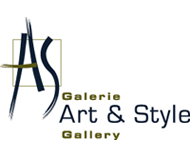
Albert Rousseau
Albert Rousseau was born on October 17, 1908, in Saint-Étienne-de-Lauzon, and died there on March 18, 1982. Since he showed a great interest in painting at an early age, he enrolled in the École des beaux-arts de Québec in 1925 where he received awards and medals throughout his academic schooling. At the end of his studies in 1931, he accepted a position in the hotel industry to make a living but did not neglect his art. ‘’I need to paint, like breathing or eating, and I paint every day, if not with my brushes, at least in imagination, in my head, everywhere while driving my vehicles, chatting with my friends, even when I dream! What I am looking for in my works above all is communicating, conveying an emotion, expressing a moment, a rhythm, a feeling: and this desire is insatiable.’’ Therefore, he took advantage of all his free time to pursue his passion, painting his country and its nature very often with his friend Marc-Aurèle Fortin as well as other Québec painters such as René Richard. In 1948, he won the Jury Prize at the Salon du printemps organized by the Musée des beaux-arts de Montréal. Then, in 1950, the Musée de Québec (now Musée national des beaux-arts du Québec) presented a retrospective of the evolution of painting in Québec since 1834 with works by 37 artists, including Albert Rousseau. These two recognitions marked a turning point in his career, paving the way to various artistic events in Canada. Throughout his life, he kept perfecting his art, experimenting with various materials and techniques: oil, watercolour, polymer and glaze, Chinese pencil, copper etching, linen canvas, plexiglas and wood. In 1960, Rousseau won first prize in the National Gallery of Canada competition ‘’ Winter Scenes’’ with the painting ‘’ Maison Chevalier ‘’ (Chevalier House). Then, on August 23, 1964, in his Saint-Étienne-de-Lauzon workshop, Rousseau held his first Rural Exhibition, which became a summer must with the participation of a growing number of students and artists. The following year, he quit his job in the hotel industry to dedicate himself exclusively to his passion, painting. In 1970, he bought the old saw and flour mill of the Seigneurie de Lauzon and converted it into a Moulin des Arts (Art Mill) dedicated to free workshops in painting, ceramics and etching. From then on, it was the venue for all the rural exhibitions until 1979. In addition to his artistic activities, Rousseau travelled extensively (France, Spain, England, Portugal, Mexico, Canada, United States, Caribbean, etc.) and this was a constant inspiration to him. He also exhibited everywhere in Canada, Paris and New York. He was considered an outstanding painter and watercolorist. Here is how he described his work: ‘’All subjects have a human reality that the painter can transpose into forms and colours, into a plastic process that comes to life through the deep reality of his/her model.’’ After Rousseau’s passing, his name was given to a multidisciplinary theater and an avenue in Québec City as well as a library and a boulevard in Saint-Étienne-de-Lauzon
 Top of page
Top of page















